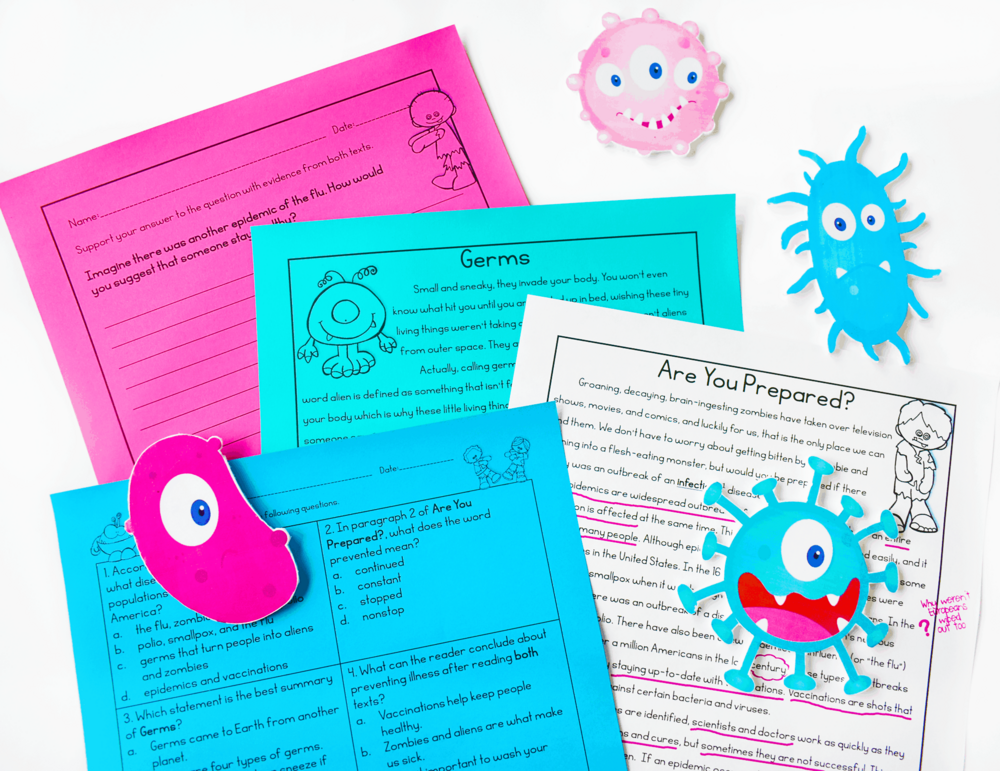Menu
Remember when you were in high school and college, and as you studied, you highlighted everything you felt was important… then you got to the bottom of a page, looked back, and your entire page was highlighted??
Yeah… that’s what we DON’T want students doing when they are reading.
If we teach students to annotate, we can eliminate that highlighter bleeding! The idea of annotating is to slow down and really think about what the author is saying.

During close reading, students should annotate the text to help leave tracks of their thinking as well as to help with their purpose for reading. How you have students annotate (the marks they will make) is totally up to you, but making sure their marks are purposeful is what is most important to teach them.
1) With a text-dependent question (or multiple questions on the same standard)… This will help provide a student a purpose for each reading. We don’t want the margins to be full of random thoughts, but rather responses to their reading based on their purpose.
2) With a cold read… Students use an annotation bookmark at first to help remind them of the things they should be thinking about while reading, but they soon don’t need it because they remember.
My students annotate during and after reading – one paragraph at a time. I teach them that if they get to the end of a paragraph and haven’t written a single thought, most likely they weren’t truly thinking while they were reading, and they should go back and reread one more time.
The best way to teach students how to think and annotate is to model it for them.
Here, I have modeled my own thinking for my students with a passage I wrote about epidemics (which you can download and use with your own class in this paired text freebie).
You can see that I showed my thinking, but it is not necessary to underline or write a thought about every single sentence, just like it’s not necessary to highlight every sentence either!
It’s also a great way to get students thinking before discussing an article with a partner. I have my students turn knee to knee and share what they thought was most important, what surprised them, and also share their questions with each other. You can see them doing that here with the second pair of texts in the free sample:
A lot of times, these conversations can help lead to new thinking for the students, which is exactly what we want from our readers!
Good luck annotating in your own classroom! If you are interested in even more paired texts, check them out here in my store!
PIN FOR LATER: